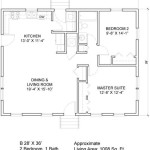Floor plans are detailed diagrams that depict the layout of a house or other building, showing the arrangement of rooms, windows, doors, and other features. They are used by architects, builders, and homeowners to plan and visualize the design of a space before construction begins.
Floor plans are typically drawn to scale, meaning that the measurements on the plan correspond to the actual dimensions of the building. This allows for precise planning and ensures that the finished structure will meet the desired specifications. Floor plans can also include additional information, such as the location of electrical outlets, plumbing fixtures, and even furniture.
In the following sections, we will explore the different types of floor plans, how they are used in the planning process, and the benefits of using them in home design.
Floor plans are essential tools for planning and designing homes. Here are 10 important points to keep in mind:
- Show room layout
- Indicate window and door placement
- Depict wall and ceiling heights
- Include measurements and scale
- Can include electrical and plumbing details
- Help visualize furniture arrangement
- Facilitate efficient space planning
- Ensure code compliance
- Aid in cost estimation
- Communicate design intent
By understanding these key points, homeowners and professionals can effectively utilize floor plans to create functional and aesthetically pleasing living spaces.
Show room layout
Floor plans clearly show the layout of all rooms in a house, including their dimensions and the location of windows and doors. This allows homeowners and designers to visualize the flow of traffic through the home and to ensure that there is adequate space for furniture and other belongings.
Room layout is especially important in areas such as the kitchen and bathroom, where there are specific requirements for the placement of appliances and fixtures. Floor plans can help to ensure that these elements are arranged in a way that is both functional and efficient.
In addition to showing the layout of individual rooms, floor plans can also depict the overall flow of the home. This can help to identify areas that may be too cramped or too spacious, and can also help to ensure that the home has a logical and cohesive design.
Overall, floor plans are essential tools for visualizing and planning the layout of a home. They can help to ensure that the home is functional, efficient, and aesthetically pleasing.
Indicate window and door placement
Floor plans clearly indicate the placement of all windows and doors in a house, including their size, shape, and location. This information is essential for planning the layout of furniture and other belongings, as well as for ensuring that the home has adequate natural light and ventilation.
- Window placement
Windows provide natural light and ventilation, and they can also offer views of the outdoors. When planning window placement, it is important to consider the following factors:
- The amount of natural light desired in each room
- The views that are available from each window
- The privacy needs of the occupants
- The size and shape of the windows
- Door placement
Doors provide access to and from rooms, and they can also be used to control the flow of traffic through the home. When planning door placement, it is important to consider the following factors:
- The function of each room
- The flow of traffic through the home
- The size and shape of the doors
- The privacy needs of the occupants
- Window and door sizes
The size of windows and doors can have a significant impact on the overall look and feel of a home. Large windows and doors can provide more natural light and ventilation, but they can also make a home feel more exposed. Smaller windows and doors can provide more privacy, but they can also make a home feel more cramped.
- Window and door shapes
Windows and doors come in a variety of shapes and sizes, which can be used to create different visual effects. For example, arched windows and doors can add a touch of elegance to a home, while bay windows and sliding glass doors can provide more space and light.
By carefully considering the placement, size, and shape of windows and doors, homeowners and designers can create homes that are both functional and aesthetically pleasing.
Depict wall and ceiling heights
Floor plans depict the height of walls and ceilings, which is essential for planning the layout of furniture and other belongings, as well as for ensuring that the home is comfortable and inviting.
- Overall ceiling height
The overall ceiling height of a home can have a significant impact on the overall feel of the space. High ceilings can make a home feel more spacious and grand, while low ceilings can make a home feel more cozy and intimate. The ideal ceiling height will vary depending on the size of the home and the desired atmosphere.
- Ceiling height in different rooms
The ceiling height in different rooms can also vary. For example, living rooms and dining rooms often have higher ceilings than bedrooms and bathrooms. This can help to create a more formal and spacious feel in the main living areas of the home.
- Wall height
The height of walls can also affect the overall feel of a home. Taller walls can make a home feel more spacious and grand, while shorter walls can make a home feel more cozy and intimate. The ideal wall height will vary depending on the size of the home and the desired atmosphere.
- Window and door heights
The height of windows and doors can also affect the overall feel of a home. Taller windows and doors can make a home feel more spacious and grand, while shorter windows and doors can make a home feel more cozy and intimate. The ideal window and door height will vary depending on the size of the home and the desired atmosphere.
By carefully considering the height of walls and ceilings, homeowners and designers can create homes that are both functional and aesthetically pleasing.
Include measurements and scale
Floor plans include measurements and scale, which are essential for accurately planning the layout of a home and ensuring that all of the elements fit together properly. Measurements are typically shown in feet and inches, and the scale of the floor plan indicates the relationship between the measurements on the plan and the actual dimensions of the home.
For example, a floor plan with a scale of 1/4 inch = 1 foot means that 1 inch on the plan represents 4 feet in the actual home. This allows homeowners and designers to accurately measure and plan the placement of furniture, appliances, and other belongings.
Measurements and scale are also important for ensuring that the home complies with building codes and regulations. For example, building codes may specify minimum ceiling heights or window sizes, and floor plans must be drawn to scale in order to demonstrate compliance with these requirements.
Overall, measurements and scale are essential elements of floor plans, as they allow homeowners and designers to accurately plan the layout of a home and ensure that all of the elements fit together properly.
In addition to the basic measurements and scale, floor plans can also include more detailed information, such as the location of electrical outlets, plumbing fixtures, and even furniture. This information can be helpful for planning the layout of a home and making sure that all of the necessary elements are in place.
Can include electrical and plumbing details
In addition to the basic measurements and scale, floor plans can also include more detailed information, such as the location of electrical outlets, plumbing fixtures, and even furniture. This information can be helpful for planning the layout of a home and making sure that all of the necessary elements are in place.
Electrical details
Electrical details on a floor plan typically include the location of outlets, switches, and light fixtures. This information is essential for ensuring that there are enough electrical outlets to meet the needs of the occupants and that the switches and light fixtures are placed in convenient locations.
Plumbing details
Plumbing details on a floor plan typically include the location of sinks, toilets, showers, and other plumbing fixtures. This information is essential for ensuring that the plumbing system is properly designed and that all of the fixtures are placed in convenient locations.
Other details
In addition to electrical and plumbing details, floor plans can also include other information, such as the location of furniture, appliances, and even artwork. This information can be helpful for visualizing the layout of a home and making sure that all of the elements fit together properly.
Overall, the level of detail included in a floor plan will vary depending on the purpose of the plan. For example, a floor plan that is used for planning the layout of a home will typically include more detail than a floor plan that is used for marketing purposes.
Help visualize furniture arrangement
Floor plans can help homeowners and designers visualize the arrangement of furniture in a home. This is important for ensuring that there is enough space for all of the necessary furniture and that the furniture is arranged in a way that is both functional and aesthetically pleasing.
- Space planning
Floor plans can help homeowners and designers plan the space in a home to ensure that there is enough room for all of the necessary furniture. This is especially important in small homes or in homes with unusual layouts.
- Furniture placement
Floor plans can also help homeowners and designers visualize the placement of furniture in a home. This is important for ensuring that the furniture is arranged in a way that is both functional and aesthetically pleasing. For example, a floor plan can help to ensure that there is enough space to walk around furniture and that the furniture is not blocking any windows or doors.
- Traffic flow
Floor plans can also help homeowners and designers visualize the flow of traffic through a home. This is important for ensuring that the home is easy to navigate and that there are no bottlenecks or areas where people are likely to bump into each other.
- Overall design
Floor plans can also help homeowners and designers visualize the overall design of a home. This is important for ensuring that the home has a cohesive look and feel and that all of the elements work together to create a beautiful and functional space.
Overall, floor plans are essential tools for helping homeowners and designers visualize the furniture arrangement in a home. By carefully considering the layout of a home and the placement of furniture, homeowners and designers can create homes that are both functional and aesthetically pleasing.
Facilitate efficient space planning
Floor plans facilitate efficient space planning by providing a visual representation of the layout of a home. This allows homeowners and designers to see how different furniture arrangements will fit in a space and to identify any potential space planning issues.
For example, a floor plan can help to identify areas where there is wasted space or where furniture is blocking the flow of traffic. It can also help to identify areas where additional storage is needed or where walls can be moved to create a more open and spacious layout.
By carefully considering the layout of a home and the placement of furniture, homeowners and designers can create homes that are both functional and aesthetically pleasing. Floor plans are essential tools for helping to achieve this goal.
In addition to helping with furniture placement, floor plans can also be used to plan the location of other elements in a home, such as appliances, fixtures, and even artwork. This can help to ensure that all of the elements in a home are placed in a way that is both functional and aesthetically pleasing.
Ensure code compliance
Floor plans are essential for ensuring that a home complies with building codes and regulations. Building codes are designed to protect the safety and welfare of the occupants of a home, and they specify minimum standards for the design and construction of homes.
- Structural safety
Floor plans must be designed to ensure that the home is structurally sound and able to withstand the loads that it will be subjected to, such as the weight of the occupants, furniture, and snow. Building codes specify minimum requirements for the size and spacing of structural members, such as beams, joists, and columns.
- Fire safety
Floor plans must be designed to ensure that the home is fire-resistant and that occupants can safely evacuate in the event of a fire. Building codes specify minimum requirements for the installation of smoke detectors, fire alarms, and fire sprinklers. They also specify requirements for the design of exit routes, such as the width and number of stairs and doorways.
- Energy efficiency
Floor plans must be designed to ensure that the home is energy-efficient and meets minimum standards for insulation, windows, and doors. Building codes specify minimum requirements for the R-value of insulation, the type of windows and doors that can be used, and the efficiency of heating and cooling systems.
- Accessibility
Floor plans must be designed to ensure that the home is accessible to people with disabilities. Building codes specify minimum requirements for the width of doorways, the height of countertops, and the installation of ramps and other accessibility features.
By ensuring that floor plans comply with building codes, homeowners and designers can help to create homes that are safe, healthy, and energy-efficient.
Aid in cost estimation
Floor plans can aid in cost estimation by providing a detailed and accurate representation of the home’s design. This information can be used to estimate the cost of materials, labor, and other expenses associated with the construction of the home.
- Material costs
Floor plans can be used to estimate the amount of materials that will be needed to build the home. This information can then be used to obtain quotes from suppliers and to calculate the total cost of materials.
- Labor costs
Floor plans can also be used to estimate the amount of labor that will be required to build the home. This information can then be used to calculate the total cost of labor.
- Other costs
Floor plans can also be used to estimate other costs associated with the construction of the home, such as the cost of permits, inspections, and insurance.
- Overall cost
By considering all of these factors, floor plans can be used to provide a detailed and accurate estimate of the total cost of constructing a home.
This information can be valuable for homeowners and builders who are planning a new home construction project. By having a clear understanding of the costs involved, homeowners and builders can make informed decisions about the design and construction of their home.
Communicate design intent
Floor plans are essential for communicating the design intent of a home. They provide a clear and concise representation of the home’s layout, dimensions, and features. This information can be used by builders, contractors, and other professionals to accurately construct the home according to the architect’s or designer’s vision.
Floor plans also help to ensure that all of the elements of a home work together to create a cohesive and functional space. By carefully considering the placement of rooms, windows, doors, and other features, architects and designers can create homes that are both beautiful and practical.
In addition to providing a visual representation of the home’s design, floor plans can also be used to communicate specific design concepts or ideas. For example, a floor plan can be used to show how a home will take advantage of natural light, or how it will incorporate sustainable design features.
Overall, floor plans are essential tools for communicating the design intent of a home. They provide a clear and concise way to convey the architect’s or designer’s vision, and they help to ensure that the home is built according to plan.
Floor plans are also used to communicate the design intent to clients. By presenting a floor plan, architects and designers can help clients to visualize the finished product and to understand the overall design concept. This can help to ensure that the client is happy with the design and that the home meets their needs and expectations.










Related Posts








